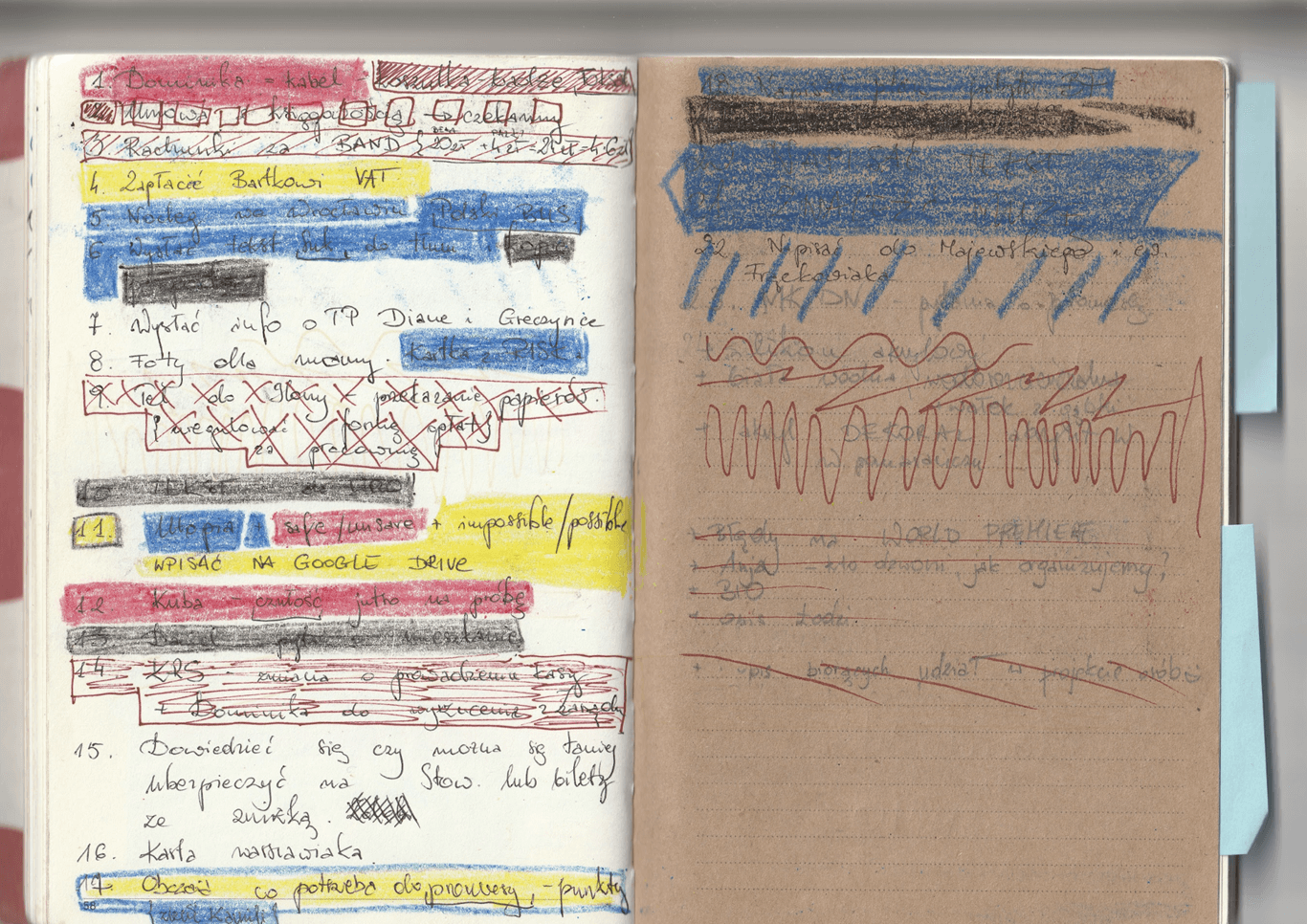Invisible work
Searching through the TERAZ POLIŻ archive, we found hundreds of contracts, letters of intent, letters to sponsors, partnership agreements, grant applications, invoices, cost estimates, financial reports, schedules and task lists. These documents filled most of the folders and notebooks, and took up about 70 per cent of the hard drive memory, which is far more than the materials from the creative processes. We were struck by how many traces are left behind by work that takes up so little space in historical narratives about theatre. Archives often present works of art or their documentation, and sometimes materials from the artistic process of their creation, but they rarely direct attention to the organisational work. And along with the invoices and cost estimates, the people doing this work become invisible.

In the first period of the group’s activity, TERAZ POLIŻ artists carried out all the tasks related to raising funds, running the association, producing performances and organising tours by themselves. Now, they have an ongoing collaboration with theatre producers Monika Balinska and Julia Tyjewska, who have taken care of the process of working on this archive while struggling with the non-transparent politics of funding from the National Reconstruction Plan.
While working on the substantive conception of the archive, the collective constantly talked about the limitations imposed by the time and financial framework of the grant. These problems are an everyday reality for grassroots collectives formed by freelance writers, in which artistic work always intertwines with organisational work. You can see it in Marta Jalowska’s notebook, where notes about sending forms to the National Council of Statutory Auditors are next to notes from the rehearsals. These entangled traces of the various aspects of working in a grassroots organisation are a reminder that feminist theatre is created in specific material conditions which influence the bodies and imagination of the creators, while also shaping their art.

